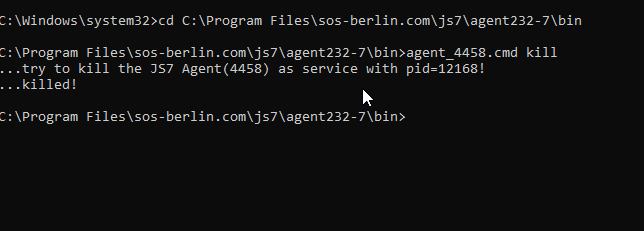Page History
...
Use of a JS7 - Agent Clusteris subject to the JS7 - License.
We find two separate tiers for clustering of Agents:
- Controller (Cluster) → Director Agent (Cluster)
- Director Agent (Cluster) → Subagent Cluster
We find two separate tiers for clustering of Agents, see JS7 - Agent Cluster:
- Operational Layer: Subagents and Director Agent Instances
- Subagents and Director Agent instances are similarly installed.
- Director Agent instances orchestrate Subagents, they . They include a Subagent that can be used if users wish to execute jobs from a Director Agent.
- Functional Layer: Subagent Cluster and Director Agent Cluster
- Jobs are assigned Subagent Clusters to specify that the jobs can be executed by any Subagent that is a member of the Subagent Cluster. The Subagent Cluster rules if a different Subagent will be chosen in case of fail-over only (fixed-priority scheduling, active-passive cluster) or for each next execution of a job (round-robin, active-active cluster).
- The Director Agent Cluster is independent from Subagent Clusters. The purpose of clustering is to provide high availability for the role of orchestrating Subagents.
...
- Kill the Active Subagent from the command line to force fail-over with one of the commands listed below.
- The Active Subagent is killed, for example:
- on Unix with a SIGKILL signal corresponding to the command:
kill -9 - on Windows with the command:
taskkill /F
- on Unix with a SIGKILL signal corresponding to the command:
- From the command line the Agent Instance Start Script can be used like this:
agent_<port>.sh | .cmd abortagent_<porr>.sh | .cmd kill
- The Active Subagent is killed, for example:
- Check the order log to verify that any jobs in the workflow are successfully executed with the next Subagent.
Further Resources
- JS7 - Agent Cluster
- JS7 - How to set up an Agent Cluster
- JS7 - Management of Agent Clusters
- JS7 - How to perform fail-over of Subagents in an Agent Cluster
Overview
Content Tools
